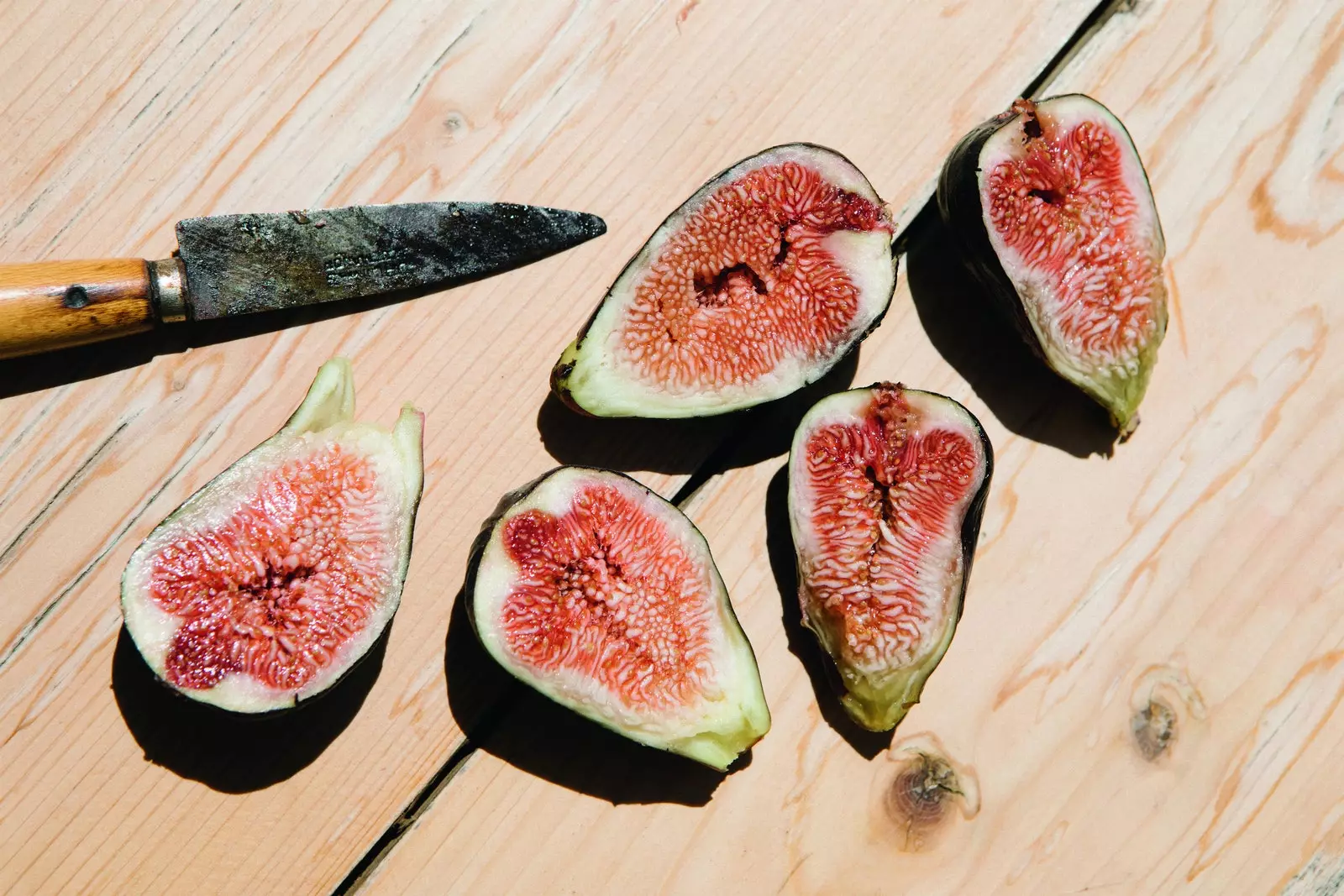
From the garden to the plate is one of the mottos of the MAdeCA restaurant.
Splash! Mediterranean. Macarena stretches and dives into the sea. Literal. A salty bath. a dip A luxury morning shaker and a much healthier way to shake off stress than Valium or Herculean triathlons, so fashionable among cooks. She has her own thing: **being the prima donna of a haute cuisine restaurant, MAdeCA, ** involves a lot of work, pressure and endless hours, which go far beyond dancing between pouts, and include interviews, photos, conferences and a constant renovation.
For Maca –as Macarena de Castro likes to be called–, the sea is the way to escape and reset. And that is why, although his apartment is literally above his restaurant in Alcudia, in the north of the island, most nights, when the service ends, he takes his boat, sails for a while and wakes up at any point, always suitable for the morning soak.
The Mediterranean is the recreation of it. Also her pantry. Where does all the fish that she serves in the restaurant come from, without exception? and that Jaume and other fishermen from the Alcudia fish market bring him daily: the San Pedro rooster, the cabroch, the forkbeard, the skate, the gatet or the dentex. She defends him tooth and nail and relentlessly. Like Íñigo Montoya in The Princess Bride. And whoever wants to look for his tickles, here he will find them for sure. “If they tell me to go try a restaurant and they take out a salmon, I get up and leave. I'm not telling you not to bring a sauce from outside, a wink. But the fish? At mallorca ?".
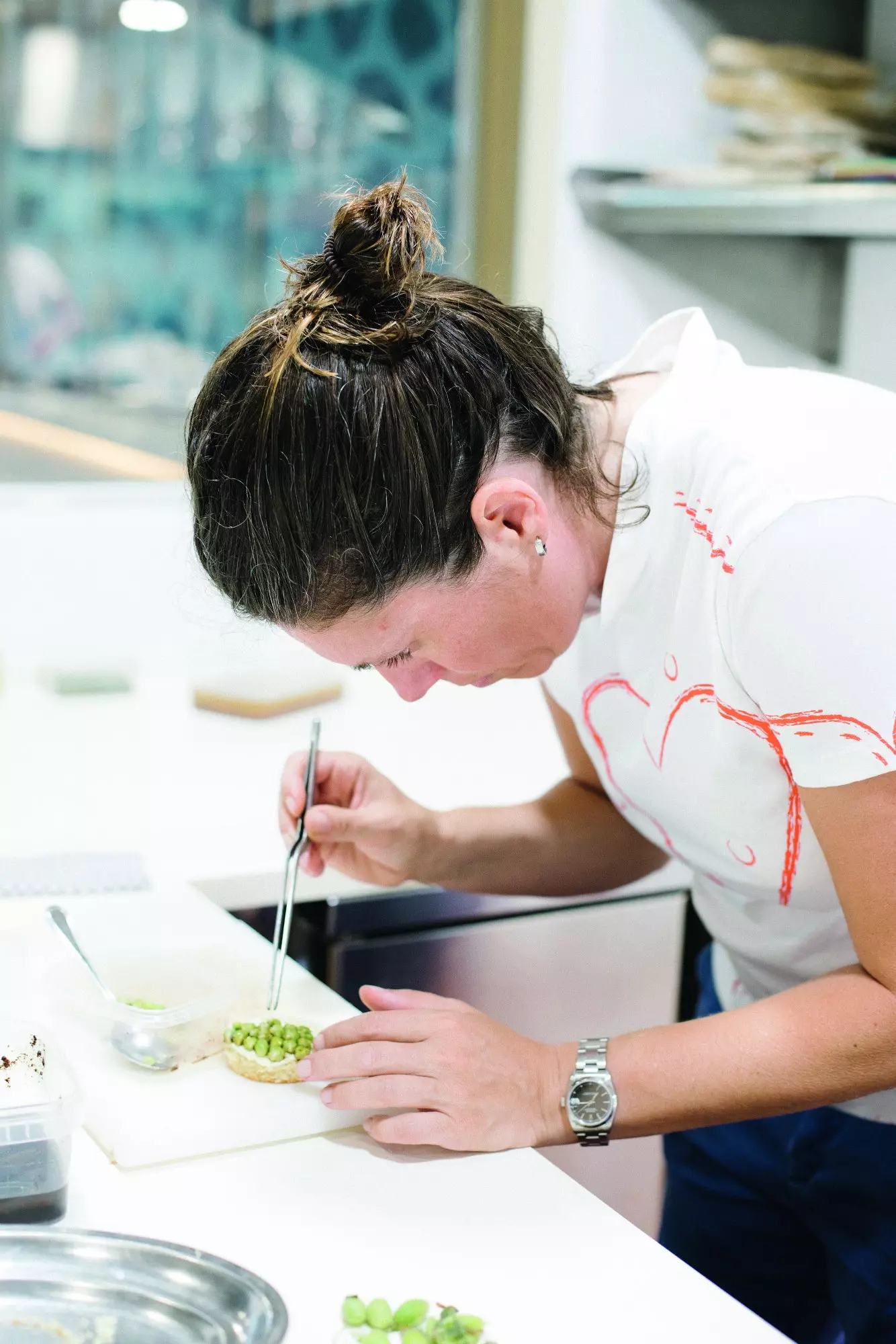
Maca preparing her cake with peas and goat cheese.
She does not only happen with Majorcan fish that are not prophets in his land. In his opinion, on the island the sea has been almost synonymous with the beach until recently and the beach is almost the only focus of interest on the island. “Many here have seen the hotel industry as the only way out and have taken the easy way out. Most of the time in gastronomy what we have is not valued and everything from outside seems better, more exotic”.
It is true that During the 20th century, Mallorca has exploited (even overexploited) its charms: those coves that one would a priori locate turning the globe upside down, that mountain range that is not beaten in idealism or the most picturesque town in Tuscany, that cathedral that wets its skirts in salt water or that elegant and sophisticated air with the that one is born or one is not born.
But gastronomy has always been a pending account and, although it was already the talk (and never better said) in Central European gossip, The peninsula did not begin to hear of its excellence until just a few years ago, when a group of young chefs proud of their land turned the omelette (and the Mallorcan fried or arròs brut) almost at the same time that their products began to be valued and the wines and oils of native varieties began to stand out.
Maca is part of this generation. She is a bow and arrow rider and her gastronomic restaurant (with her Michelin star included), is a good place to get rid of prejudices, learn and enjoy. High avant-garde with one hundred percent Mallorcan ingredients has been, from the beginning, the recipe that over time has evolved and matured towards something freer and without ties, which he calls "Free Mallorcan cuisine".
During years turned to recover the popular cookbook, I went to town festivals, markets, fairs, asked grandmothers questions and studied old books, while combining all this with stays in other great restaurants where I could continue learning (Mugaritz, Zuberoa, Picasso... ) .
Now the time has come to go one step further, a turn of the screw. "I took off, I wanted to radicalize and I can because I have made a lot of tradition”. That does not mean that it moves away from the Mallorcan product. On the contrary. Everything revolves around him and only him.
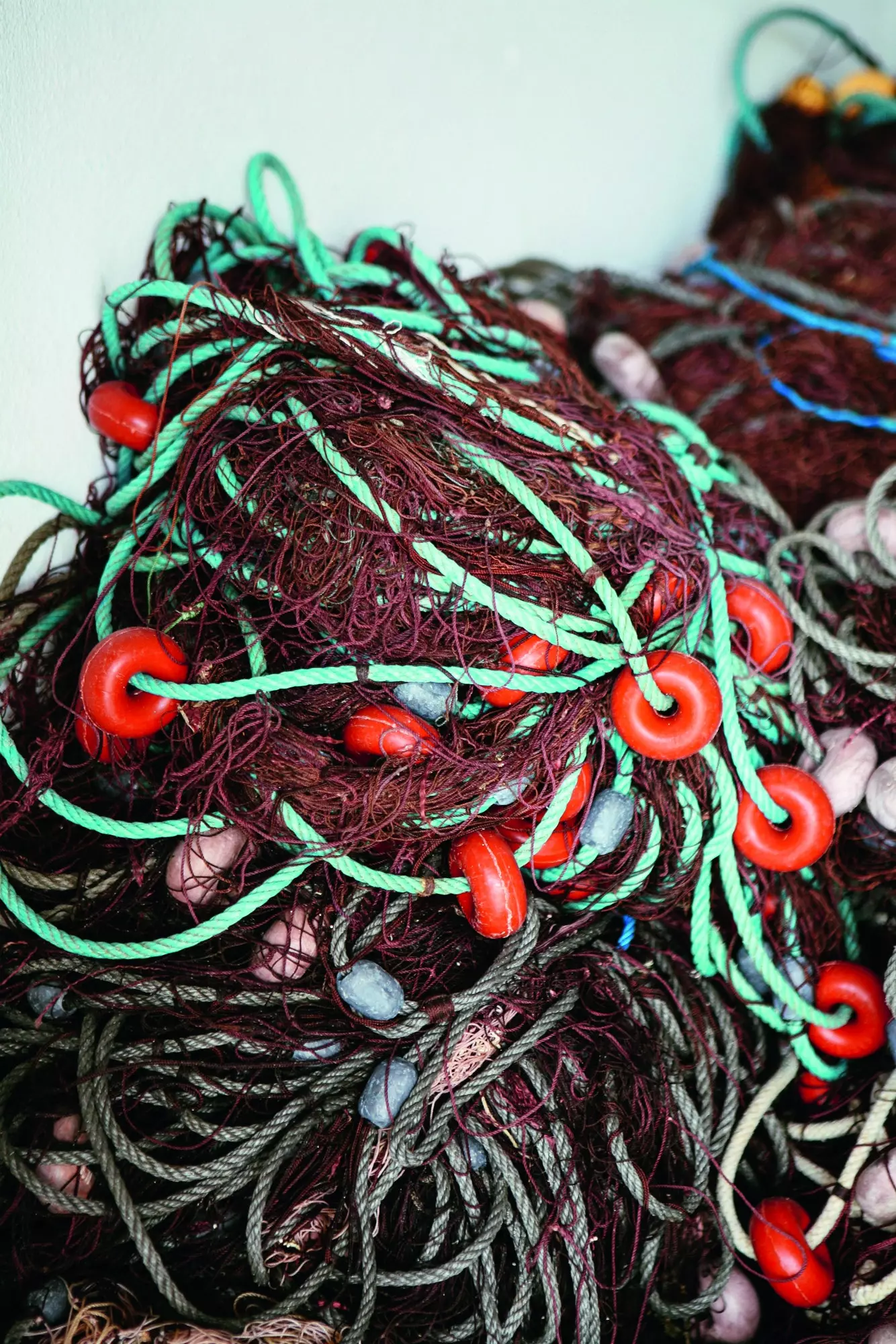
Detail of the nets from Jaume and his son's boat, which supply Maca with fish.
Edu Gandía, chef and former head of the I+D+Tradition department (who has recently undertaken a solo project), and has worked with Quique Dacosta, Martín Berasategui or Fran Martínez, has been his right hand in this. For years he has combed the island visiting peasants every week, “Looking for the most special to shape it in the restaurant and fit it into the dishes. We are very much guided by temporality, without limiting ourselves to old recipes, but always using Majorcan products“.
Pere Ramis manages the day to day with tact from the restaurant's garden, in Sa Pobla, where many of the fruits, vegetables and herbs on the plate come from: from the basics such as rosemary, thyme or lemon verbena, to Majorcan (and Balearic) varieties, such as fesols fava from Sóller, careta legumes, blue peas from Menorca or frare plums, in addition to the eggs laid by hens Minorcan and Ibizan races that chase him.
The orchard is also the place where the big gatherings are held in this house, the councils that once a month they gather around a long table and a Majorcan fried (or whatever touches), the 'committee of wise men', that is to say, to the management leadership of the restaurant, the marketing team and the true protagonists, the peasants, who supply and nurture with their knowledge.
They are Biel, Montserrat, Lluís, Xesc or Llorens, and together they could write an encyclopedia of Majorcan biology, gastronomy, anthropology or botany or assemble an entire Noah's ark to survive a flood. Survive at the blow of tributes, because everything they produce or elaborate is of the highest quality, most of the time organic (and almost always unique).
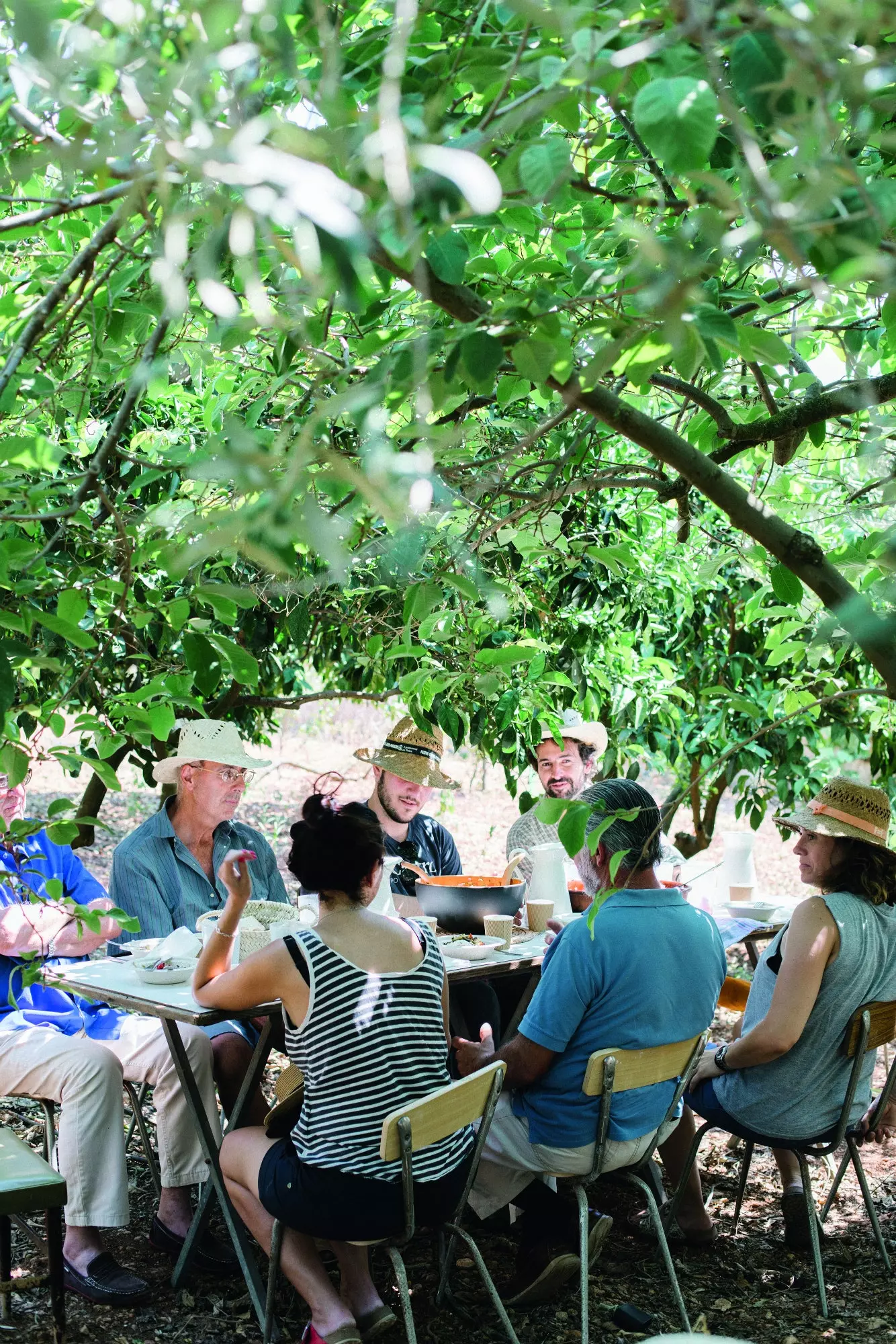
One of the 'wise councils' in the Sa Pobla orchard.
They talk, comment on their progress, exchange views, brainstorm ideas and give each other feedback.
In addition to being the general secretary of the agricultural union Unió de Pagesos and a member of Slow Food Illes Balers, **Biel Torrens has a completely organic production farm in Ruberts, Can Caló,** where he grows pebre bord de tap de cortí (the Mallorcan red), ramallet tomatoes (those used for pa amb oli) and cor de bou (ox heart), almonds, olives, carob beans, capers, sea fennel, quince and cereals, with which he produces blat xeixa flour , preserves and oil. He also breeds some Balearic breeds such as the porc negre (black pig), the Menorcan cow, the Majorcan red sheep and even ostriches.
Xesc Ayarte took early retirement and wrapped the blanket around his head to dedicate himself to what he had always liked: raising birds. Maca keeps her best quail, pigeons and eggs from the quicas hens, a local species with low productivity but high quality. The quail with green dates or stuffed with eel and the pigeon with malted seisa burballes (noodles) are some of the dishes that can be tried in the restaurant made with them.
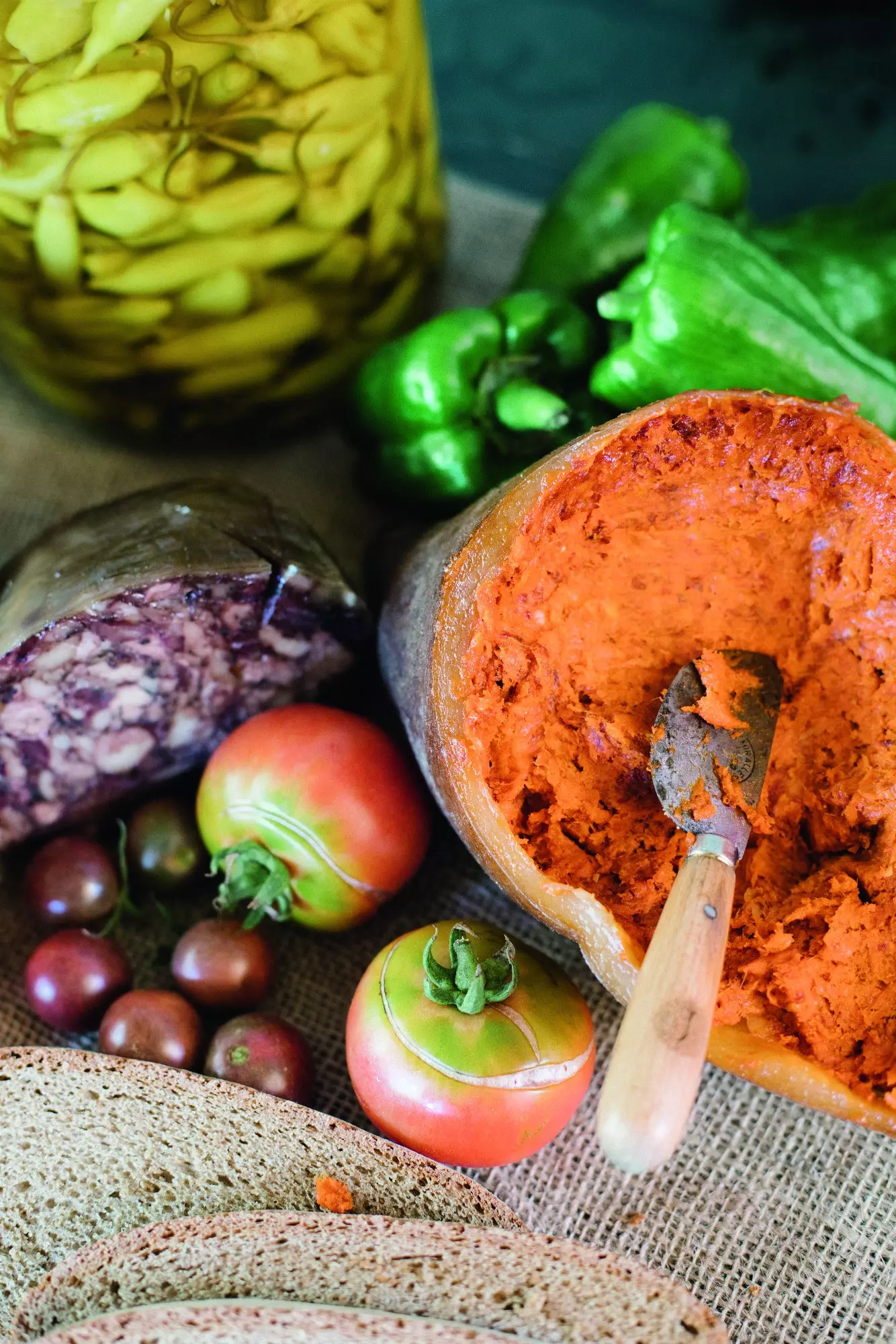
Artisan sobrasada and local pickles.
The only thing that can be said about Monserrat Pons is that he is a "true phenomenon", a romantic of those few left and a lover of Mallorca in general and the world of the fig tree, the Mediterranean tree par excellence, in particular, which gives "the poor man's bread and rich man's dessert.
World eminence of matter, he has in Llucmajor the largest experimental plantation in Europe (and possibly the planet), Son Mut Nou, in which he "recovers varieties at risk of genetic erosion and discovers other unknown ones".
A total of 2,834 fig trees, 1,308 classes from all over the world (226 from the Balearic Islands) and even a garden with the “daughters” of the fig trees under which distinguished poets such as Lorca, Machado, Miguel Hernández or Rosalía de Castro wrote, whose cuttings he has brought from their respective gardens.
With the figs he makes everything he can think of: cava, beer, vinegar, coffee, three types of jams (winter, summer and August) and even syrup, a dried fig concentrate that was given in the past after childbirth.
At the end of the year, Maca designs a 17-step menu with figs de Montserrat, which is served for a week in the restaurant.
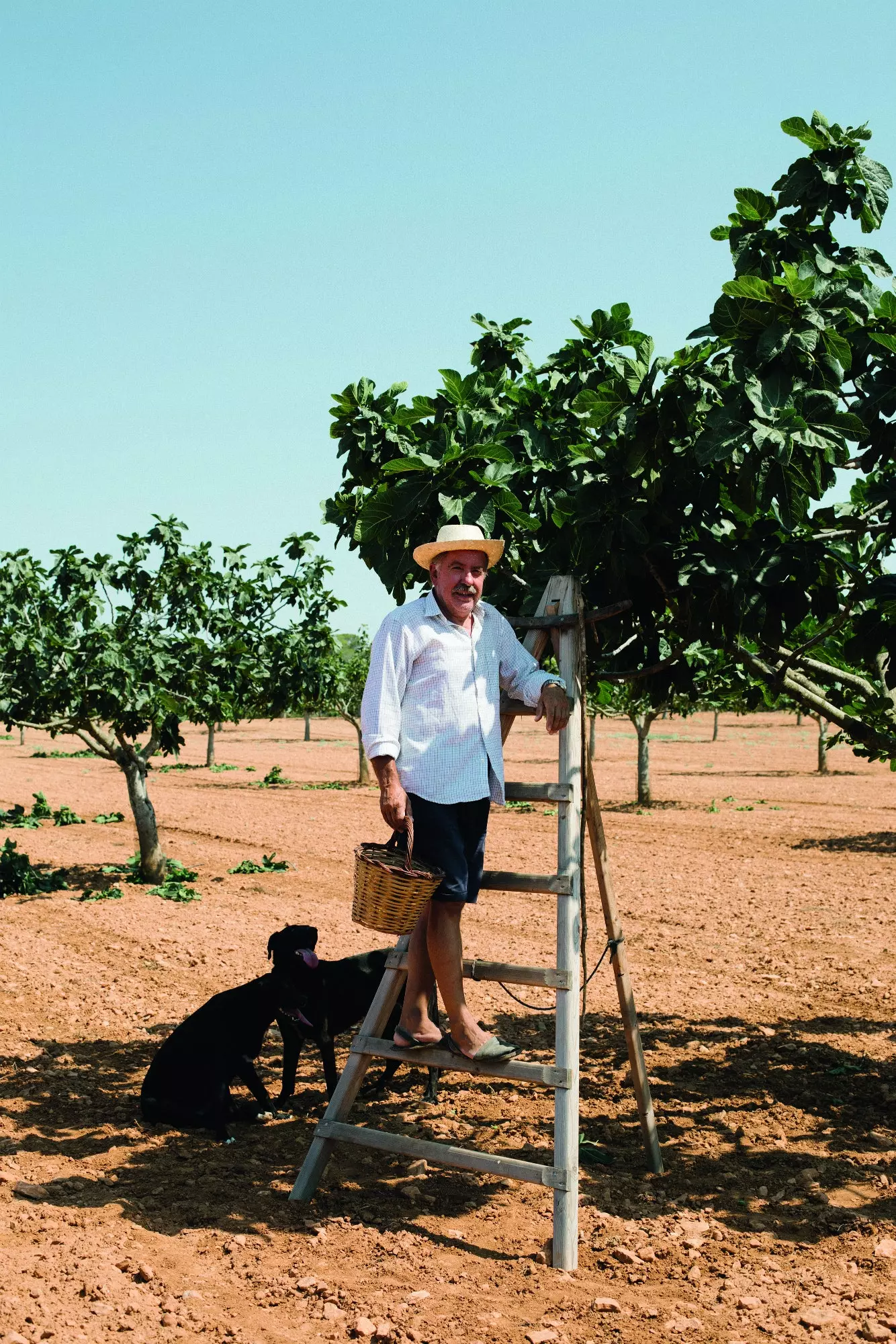
Montserrat Pons, accompanied by her inseparable dogs at the foot of the fig tree.
Also in Llucmajor is the possessió (estate) of Lluís, Son Cànaves, a golden stone mansion that looks more like a boutique hotel, surrounded by trees. Various types of organic cheese are made here: raw milk cured for more than 60 days; lactic cheese, with lactic curd, which can be consumed in two weeks; fresh cheese; cottage cheese and natural yogurt.
With the Maca dairy cheese she makes a dessert that led to the tribute to Paco Torreblanca and which has garnered great compliments (amontillado sponge cake with tear pea and dairy cheese cream) and with the cottage cheese an arm of gypsy nettle.
On the farm there are also free-roaming pigs that feed on the grain they themselves produce and with which they make homemade sausages.
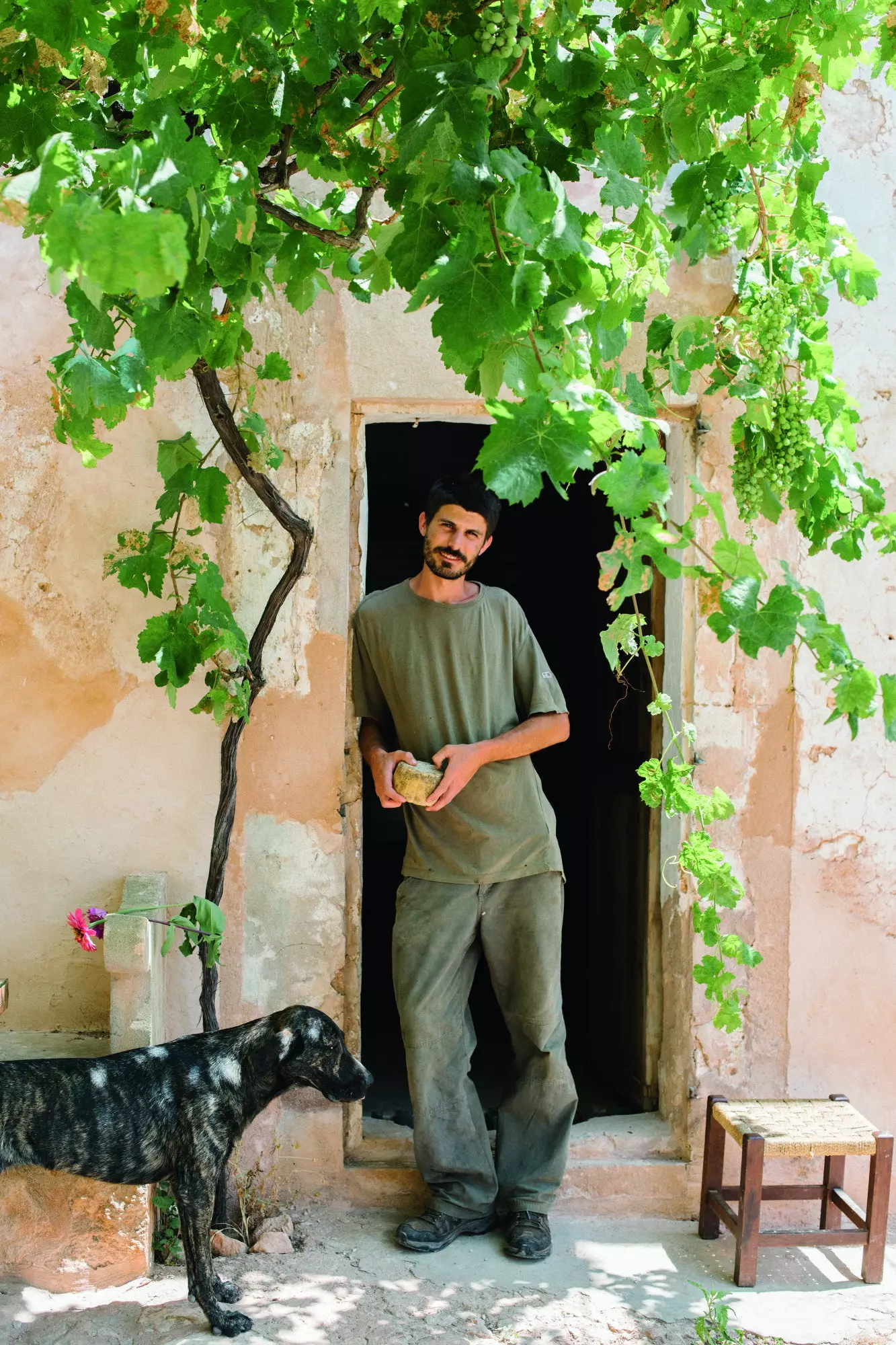
Lluis at his farm in Llucmajor, where he makes organic sheep's milk cheeses.
Another convinced idealist is Llorenç Payeras, a restless writer with a Renaissance spirit and a scholar of native animal and plant breeds of Mallorca and everything that revolves around it... its anthropological, cultural component, its poetry, its traditional festivals, its annual calendar, its language...
Not content with theorizing, he is a brave man who has dared with Majorcan mare's cheese, something that had never been done before and that is very difficult, because his milk lacks casein and fat.
Maca has used it in several of its dishes, including pumpkin spaghetti, prepared like a carbonara, which combines two unprecedented Majorcan products: this cheese and a distillate of Balearic hypericum with which the egg yolk is cooked. they give me a guideline, They tell me what is there and based on that we cook, letting Mallorca do the talking”, explains Maca.
“Last summer, for example, we also made a cuttlefish and snail broth with juniper seeds, fennel and coriander, and a Bloody Mata, which is a tomato water with vodka macerated with tomato plants, which smells of the countryside and tastes to tomato plant, to drink as an aperitif. They work, and I buy them, worth one or worth ten. And so, together, we make the wheel turn”.
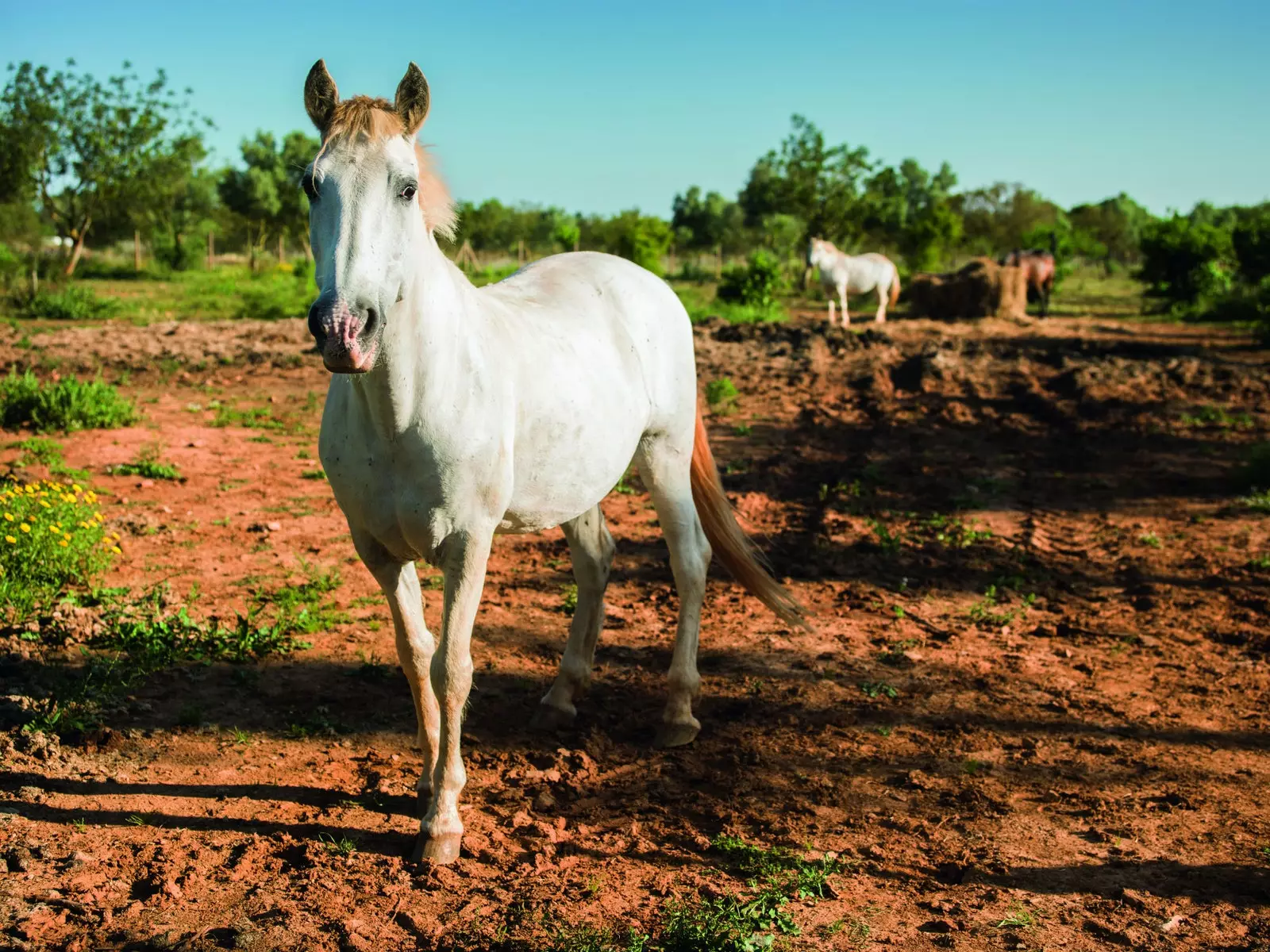
Horse at Sa Bassa Rotja, a rural hotel with a vegetable garden.
WHERE TO SLEEP
Finca Serena: Opening scheduled for April that promises to become one of the landmarks on the island. Elegant indoor retreat between olive trees, vineyards and fruit trees.
Son Brull: Views of the Tramuntana mountains and 23 rooms in this boutique hotel located in an 18th century monastery family run in Pollensa.
Hotel Predí Sonjaumell: Rural hotel in Capdepera in a century-old mansion decorated in contemporary Majorcan style within a large estate. Its restaurant (one Michelin star) is run by Andreu Genestra , another of the names of this new wave of Majorcan chefs.
Sa Bassa Rotja: Beautiful rural hotel with 38 rooms in a 13th century mansion and with more than one hundred hectares of field. It is located in Porreres.
Es Princep: Anyone who needs their urban moment will find it at this Palma hotel with views, an oasis spa, Coco, and Genestra's cuisine at the Bala Roja restaurant.
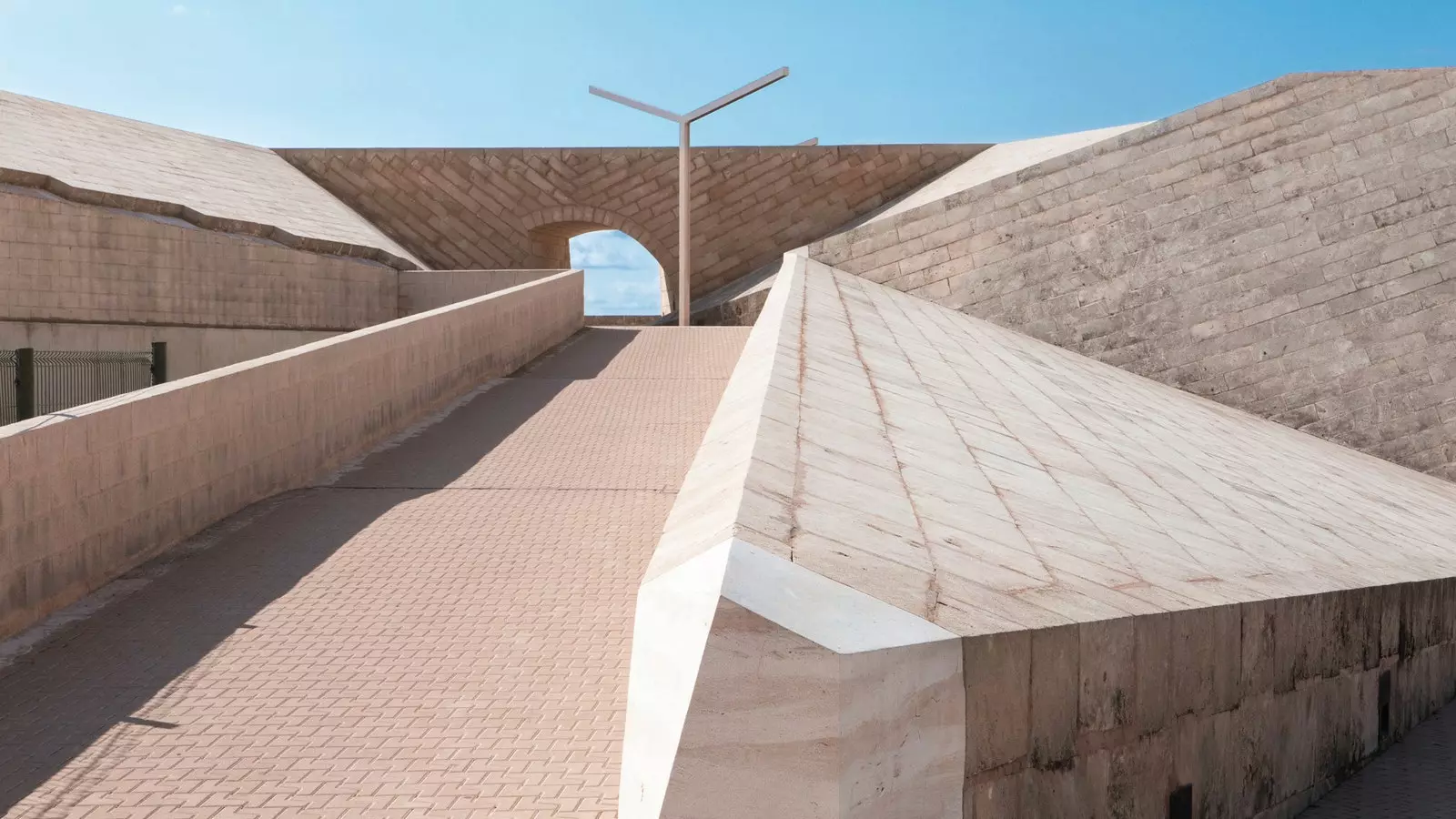
Architectural forms in the Es Princep hotel.
WHERE TO EAT
MAdeCA: This is Macarena's gastronomic restaurant, formerly known as El Jardín, where you can try dishes such as pumpkin carbonara with mare cheese or lemon-flavoured San Pedro with angel hair, chamomile flower. Downstairs is his bistro, with some of his star dishes; and Danny's, a gastrobar with informal proposals.
Ca na Toneta: Away from the Majorcan hustle and bustle, this house is always synonymous with honesty. The Solivellas sisters make it so by cooking what the land gives and what has always been cooked in Mallorca. Everything here has coherence, from the place to the crockery.
S’era de Pula: Edu Gandia and Omar Lorca met at Quique Dacosta and met again at MAdeCA. Together, they now run the new restaurant at the Pula Golf Resort hotel. In Son Servera (one of the quietest areas of the island), This is a very Majorcan space, with a simple but careful concept, and with a search for the best product (with a preference for the local). Norway lobster with tear pea, espardenyas with black truffle...
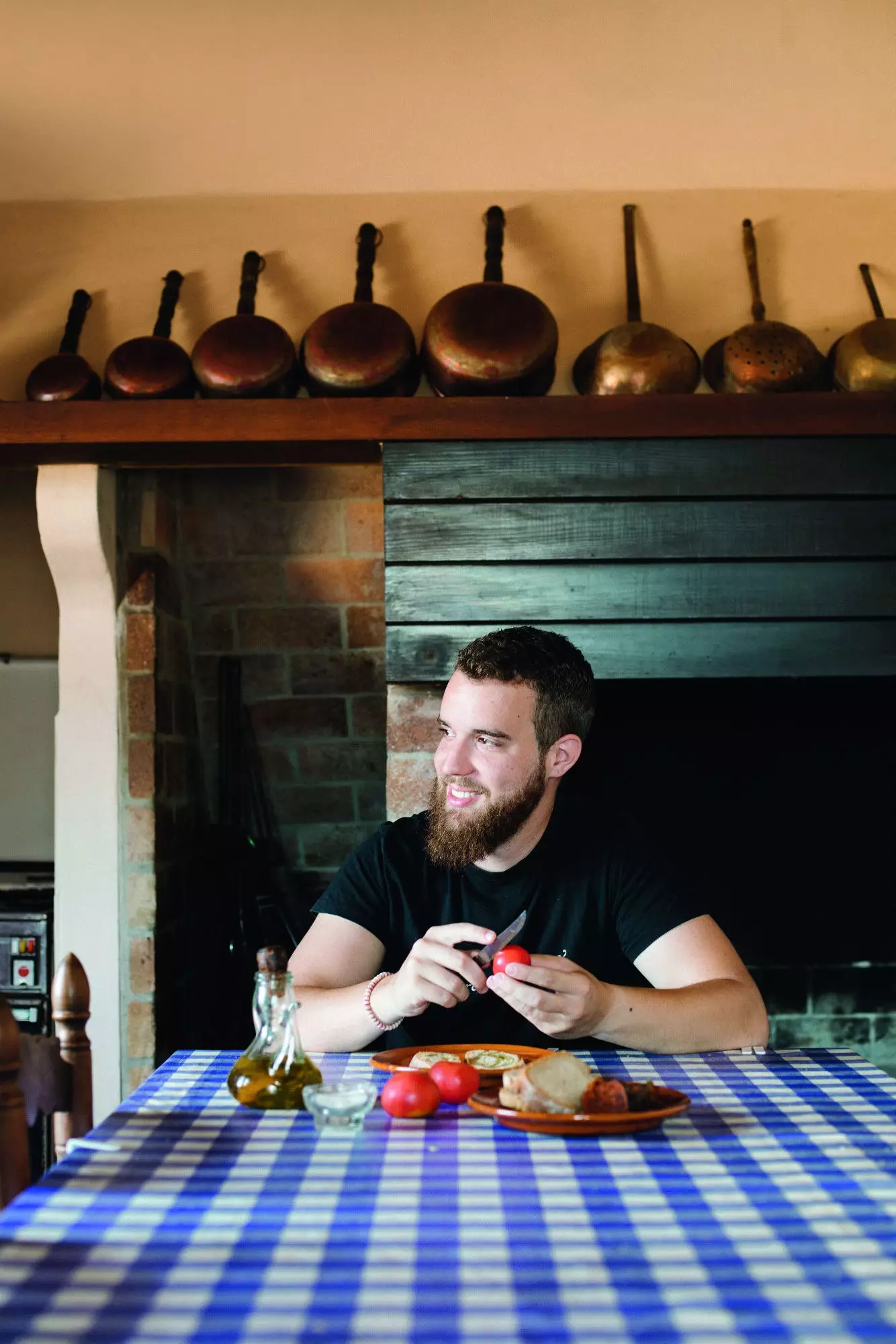
Edu Gandía, preparing a 'pa amb oli' in the Son Mut Nou kitchen.
WHAT TO VISIT
Son Mut Nou: To learn everything about the fig tree... and buy it, from jams to cavas.
Aubocassa: Top oils in Manacor.
Mesquida Mora: Bárbara Mesquida's winery, pure Mallorca.
Ánima Negra: The wines that Miquel Barceló “paints”.
4Kilos Vinícola: The revolutionaries of Majorcan wine.
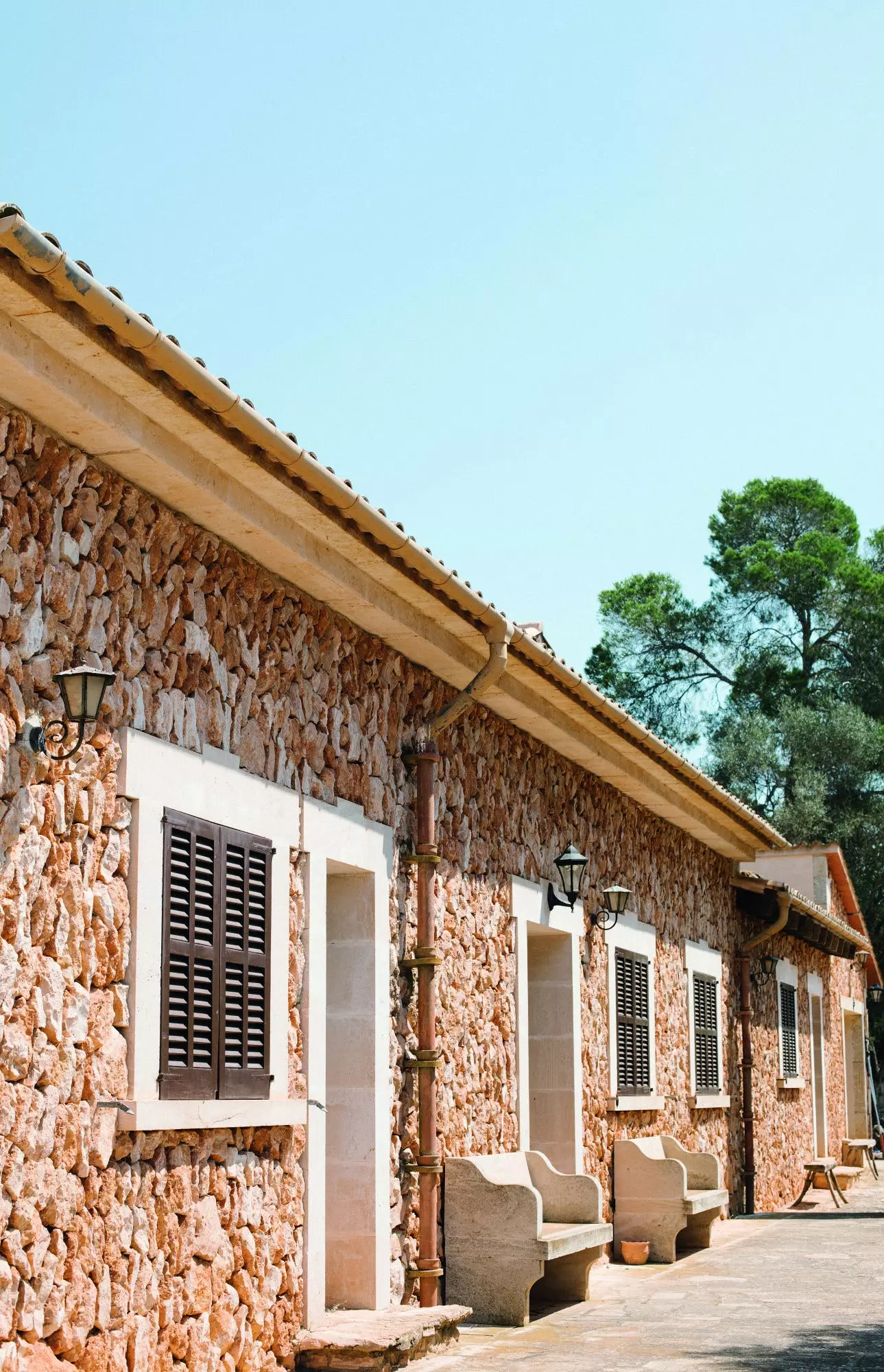
Exterior of the Son Mut Nou building.
